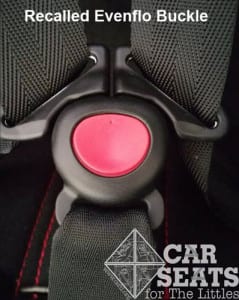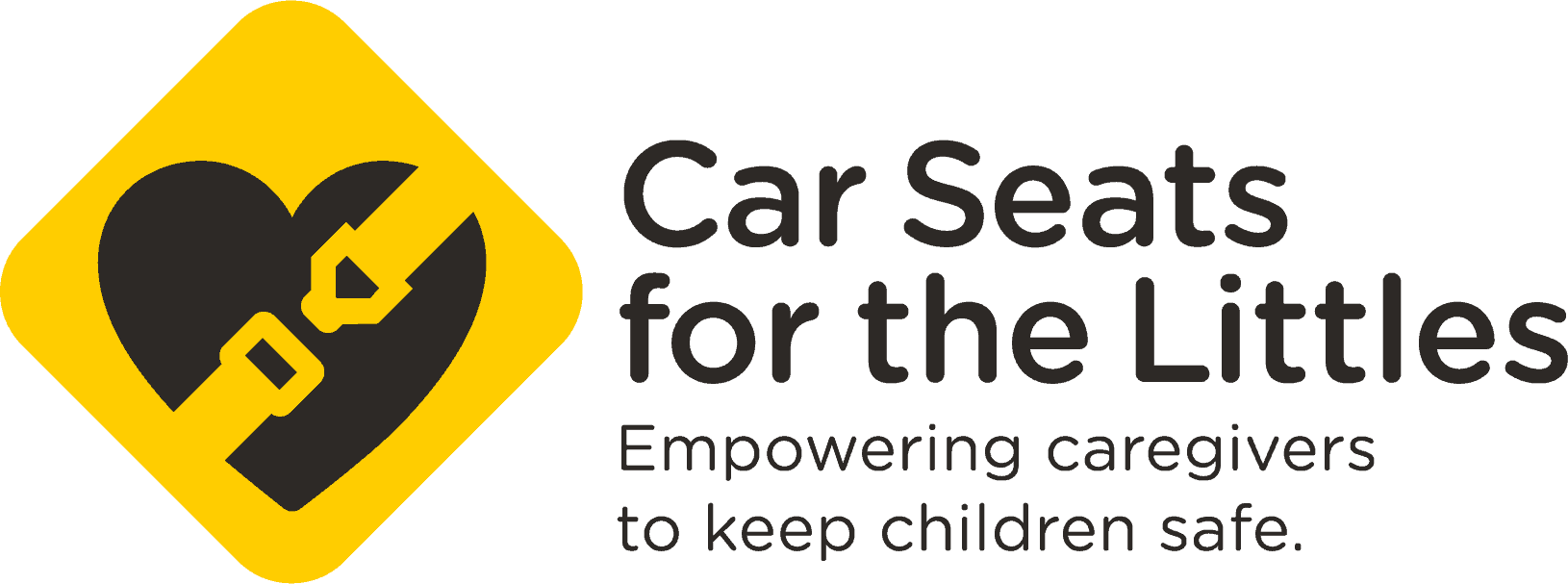Recalls happen all the time. Recalls can happen for as many different reasons as there are different items that are recalled. When it comes to car seats, recalls can be anything from a typo on a required line on a sticker to an issue that makes a car seat completely unsafe or unusable. Caregivers tend to panic when they hear of a recall, but some are so confusing, or seemingly so minor that they’re never fixed. We’ll look at the types of recalls and why complying with them is so important.
Why Recalls are Important
In terms of the car seat remaining safe to use, an error or a typo on a recalled sticker doesn’t matter. If you never replace the sticker, the car seat will still work as intended. However, putting the new sticker on the car seat may ease confusion later on, after time has passed and the fact that there was ever a recall in the first place has been forgotten.
Types of Recalls
Voluntary Recalls

Evenflo Buckle Recall
A voluntary recall doesn’t mean that the fix can be ignored. What it means is that the companies are not being forced by NHTSA to have the recall.
In recent years, the Amsafe brand of buckle recall in 2014 that affected Graco, Evenflo, and Baby Trend car seats was confusing to some caregivers because it was listed as a voluntary recall.
When it comes to recalls, “voluntary” doesn’t mean “optional.”
A voluntary recall is like this: a child is told to clean their room before they can eat dinner. That child “voluntarily” cleans their room because nobody else will clean their room for them. When it comes to car seats, the company is issuing the recall on their own, without NHTSA doing it for them.
A voluntary recall does NOT mean the fix can be ignored, or that it’s not important.

Graco replacement buckles
Recalls Requiring Discontinuing Seat Use

Kiddy World plus
In some instances, recall notices require that caregivers discontinue using their car seats. This happened recently with the Kiddy World Plus.
If this happens, don’t panic. The company will make good on whatever the fix is. Sometimes they will send out a new seat, or they will issue a check or refund or company credit; the company will make sure you get your money’s worth. If that’s not fast enough (they’ll send out a seat in a week, but you’re traveling tomorrow and have no spare?) then you must go out and get your own seat, and you can talk to them later about possible reimbursement, though of course the company issuing the recall may not be able to offer the exact credit the individual caregiver wants.
Complete Those Registration Cards!
For any car seat or any item you receive that includes a registration card, please remember to register it. That way if you hear of a recall, or are notified of one, it will ease the process of attaining the company’s correction to the defect. If you have two car seats, even if they’re the same exact model, register both of them. That way the company knows you have two and will send out two fixes.
If you already own a car seat and you want to be sure it was not recalled, the NHTSA keeps a full searchable listing of all child restraint recalls in the US here, and Transit Canada keeps their database here.
Wrapping Up
Recalls happen every now and again, and lots of different companies issue them. There’s no cause for alarm or panic, just follow the instructions for getting the replacement part, updated sticker, or doing whatever else the manufacturer lists as a solution and your car seat will remain safe and ready to go!
Car companies also issue safety recalls: while you’re checking your car seat, it’s a good idea to also check your car. The National Safety Council has a site to look up active car recalls for the US here.
Though there’s no substitute for product registration, at CSFTL, we do our best to keep on top of the latest in recalls. See our recall listing for details about recent recalls.
